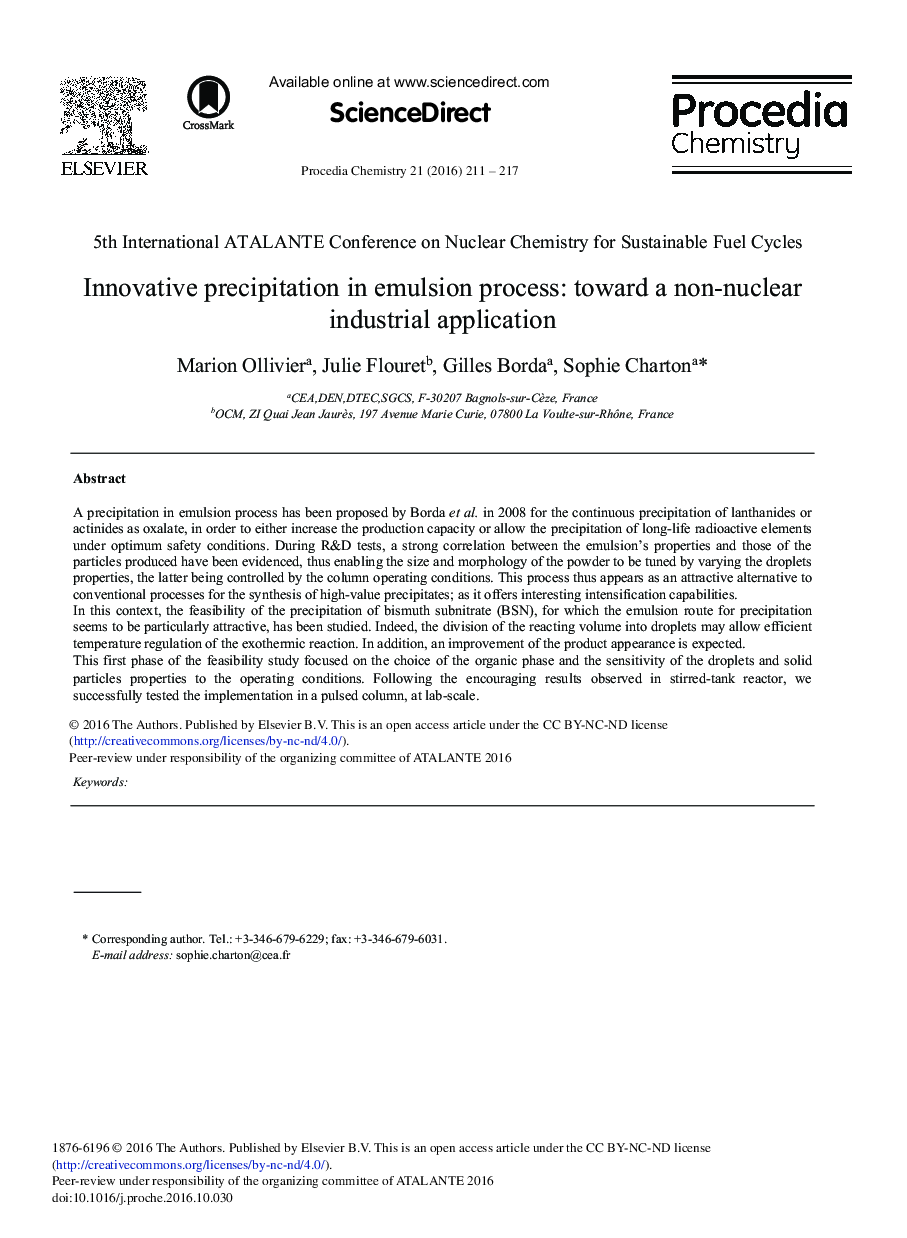| Article ID | Journal | Published Year | Pages | File Type |
|---|---|---|---|---|
| 4910931 | Procedia Chemistry | 2016 | 7 Pages |
A precipitation in emulsion process has been proposed by Borda et al. in 2008 for the continuous precipitation of lanthanides or actinides as oxalate, in order to either increase the production capacity or allow the precipitation of long-life radioactive elements under optimum safety conditions. During R&D tests, a strong correlation between the emulsion's properties and those of the particles produced have been evidenced, thus enabling the size and morphology of the powder to be tuned by varying the droplets properties, the latter being controlled by the column operating conditions. This process thus appears as an attractive alternative to conventional processes for the synthesis of high-value precipitates; as it offers interesting intensification capabilities.In this context, the feasibility of the precipitation of bismuth subnitrate (BSN), for which the emulsion route for precipitation seems to be particularly attractive, has been studied. Indeed, the division of the reacting volume into droplets may allow efficient temperature regulation of the exothermic reaction. In addition, an improvement of the product appearance is expected.This first phase of the feasibility study focused on the choice of the organic phase and the sensitivity of the droplets and solid particles properties to the operating conditions. Following the encouraging results observed in stirred-tank reactor, we successfully tested the implementation in a pulsed column, at lab-scale.
